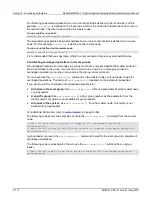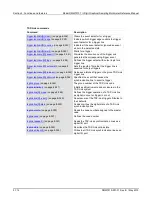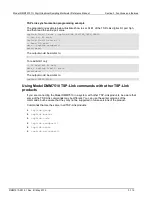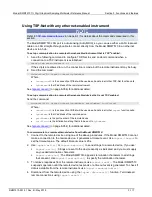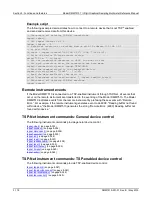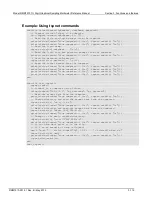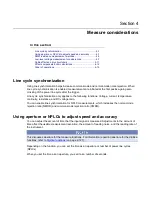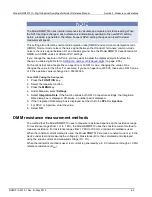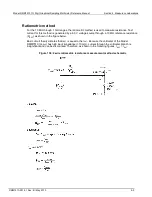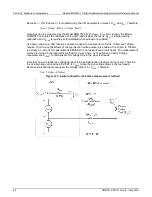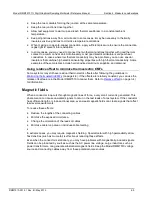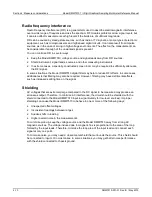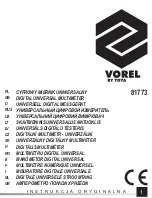
Section 4: Measure considerations
Model DMM7510 7½ Digit Graphical Sampling Multimeter Reference Manual
4-6
DMM7510-901-01 Rev. B / May 2015
Because I = V/R, Equation 1 is modified using the V/R equivalents in place of I
REF
and I
DUT
. Therefore:
I
SOUR
= (V
MEAS
/ R
REF
) + (V
MEAS
/ R
DUT
)
Note that V
MEAS
is measured by the Model DMM7510. With V
MEAS
, I
SOUR
, R
REF
known, the Model
DMM7510 calculates the resistance of the DUT and displays the result. R
REF
is learned during
calibration and V
SOUR
is routinely self-calibrated when autozero is enabled.
As shown, the 4-wire ohm function can also be used to measure ohms for the 10 M
Ω
and 100 M
Ω
ranges. To minimize the effects of charge injection when autozero is enabled, the 10 M
Ω
to 100 M
Ω
is actually a 3-wire ohm measurement. SENSE HI is not used (it can be left open). The measurement
method is similar to the ratiometric method for 2-wire ohms, but it performs an extra voltage
measurement (V
LEAD
) to compensate for voltage drop in the input test leads.
Note that V
MEAS
includes the voltage drops of the input test leads (Input HI and Input LO). Therefore,
the actual voltage drop across the DUT is V
MEAS
minus the two voltage drops in the test leads.
Because matched inputs are used, the voltage drop is 2 x V
LEAD
. Therefore:
V
DUT
= V
MEAS
- 2(V
LEAD
)
Figure 137: 4-wire ratiometric resistance measurement method

